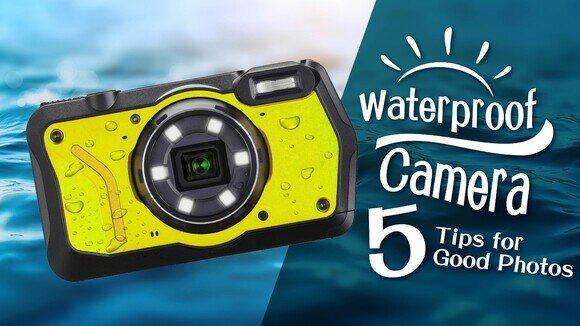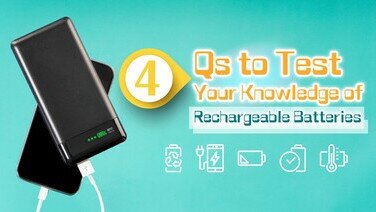Shooting
1) 3 to 5x zoom
The 8 models tested had optical zoom range from 3 to 5, which were quite weak for capturing distant images when compared to some new camera models. However, when shooting underwater, as light is blocked by water (no matter how clear it is), distant images captured will appear dull and blurry. On the other hand, get close to your subject when shooting will yield better result, thus the 3 to 5x zoom lenses should generally be adequate.
2) Equivalent focal length and maximum aperture!
| Equivalent focal length at the wide-end | The equivalent focal length at the lens’ wide-end varied considerably among the tested models (21mm – 30mm). One model was quite rare as it had an equivalent focal length of 21mm, making it superior in wide-angle shooting and was particularly suitable for shooting in tight spaces and capturing ultra wide-angle pictures. |
|---|---|
| Maximum aperture size at the wide-end: | The maximum aperture at the lens’ wide-end of the tested models ranged from F2 to F3.9. An aperture size of F2 was considered large and could capture good-quality images under low-light conditions. Next, the model with an aperture size of 2.8 was also good enough. |
3) Fast shutter speed!
| Focusing and shutter speed: | Whether to capture pictures of swirling fish or images of your kids splashing water, you need to have fast focusing and shutter speed! The test measured the time lag between pressing the shutter-release button to when the image was actually captured, which was mainly attributable to the time required for autofocus. The lag varied between 0.06 and 0.87 seconds among the tested models, which was quite good. |
|---|---|
| Shutter speed – single shooting | Tests were conducted under single-shooting mode, without flash and for the highest picture quality. Results showed that the minimum time interval between 2 photos taken varied between 0.6 and 1.7 seconds. |
| Shutter speed – continuous shooting (burst mode) | Tests were conducted under continuous-shooting mode and for the highest picture quality. The average number of shots taken per second varied considerably among the tested models at between 1 and 9.8. |
4) High-light vs low light!
| Normal light: | In addition to taking various photos including portraits, grassland, trees, sky and buildings under indoor lighting and outdoor sunlight, the tested models were also put in a 500-liter purpose-built aquarium in the laboratory for underwater shooting. Only 1 model achieved outstanding result. |
|---|---|
| Low light: | Taking photos in low-light environments, such as at night or under dim indoor lighting, may result in poor picture quality. Tests were conducted in light boxes with 30 and 10 lux of illuminance and most models only managed to achieve average results in picture quality. |
5) My hands are shaking!
| Shockproof: | Models equipped with optical/mechanical anti-shock features delivered relatively more stable images. Models with only anti-motion blur function generally delivered inferior results. |
|---|
Other features
Other features such as video quality, screen clarity under outdoor sunlight, and Wi-Fi operation, etc., are all factors that can be taken into consideration.
In terms of video recording, all models achieved good results when the videos were taken under normal light. However, when recording was done in a low-light environment, the videos taken from most models tended to be dark or blurry. As for the sound quality, none of the models achieved high scores due to background noise or poor sound quality.
Underwater mode
Underwater mode works mainly by adjusting the white balance and modifying the images. If the user possesses some basic knowledge about photography, the same effect can be achieved by manual setting. Image processing can also be done afterwards with the help of certain computer software for more desirable results.
Learn underwater photography with 2 easy steps
1. Basic step – Adjust aperture and shutter speed: To have a clear shot underwater, you must ensure that the exposure and focus are right. Exposure can be controlled by adjusting the shutter speed, aperture and ISO. For moving objects, shutter should be set at a faster speed. A Larger aperture size which results in a shallow depth of field.
(Tips for lazy people: If you use the fully automatic mode, everything is automatically adjusted by the camera without you worrying about it!)
2. When underwater – Pay attention to light: Remember to use the correct white balance setting. Since the transmittance of light in water is lower than in air, the light will be blocked in water. So, it is better to shoot the image at a closer range. Distant images are usually dull and blur due to the lower contrast. In addition, avoid to backlighting or shooting in dark spots, and turn on the flash if necessary.
Waterproof performance: Take proper care of it!
Under normal storage conditions, the waterproof performance should remain intact for the first few years after purchase. However, users should ensure proper usage to make their cameras truly waterproof! Take a look at the following 2 maintenance tips!
1. Make sure the cover is properly sealed
- Before use: Before shooting in water, follow the instructions in the user’s manual to thoroughly clean the surroundings of the cover for the battery/memory card compartments and terminals. Ensure that there is no hair, sand and other foreign objects which may interfere with the proper sealing of the covers. When closing the covers, make sure that they are firmly closed.
- After use: Wash away the salt and sand on the camera with clean water, and then wipe it until fully dry before opening the covers. If not handled properly, the waterproof performance may be undermined due to water leakage.
2. Before using, check if the water-resistant sealants of the cover doors are intact
The waterproof performance of a camera will lose its effectiveness over time. And the water-resistant seal of the cover for the battery/memory card compartments and terminals may gradually harden and lose their elasticity due to aging, thus losing their functionality.
For a camera that has been used or stored for more than 5 years, you may want to conduct a simple test at home on its waterproof performance before taking it underwater:
- Close the covers firmly and put the camera in a bucket of water for a while
- Take the camera out and wipe it dry, then open the cover to check inside
- If there are any traces of water or vapour, the waterproof performance of the camera may have already been undermined, and the camera will no longer be suitable for underwater photography.
Repair: If the waterproof camera shows signs of water leakage, replacing the water-resistant seal should restore its waterproof performance. However, if the model has been discontinued for production, the manufacturer or agent may not have the accessories for replacement.
Well, by now consumers may have already possessed same basic knowledge about waterproof cameras! To see the detailed report, please refer to the article ‘A Comparison Among 8 Waterproof Cameras’ (Chinese version only) in Issue #465 of CHOICE Magazine






![[Baby Snacks Guide] Who Says Snacks Can’t Be Healthy?](/f/guide_detail/415742/376c212/bb%20snack.jpg)




